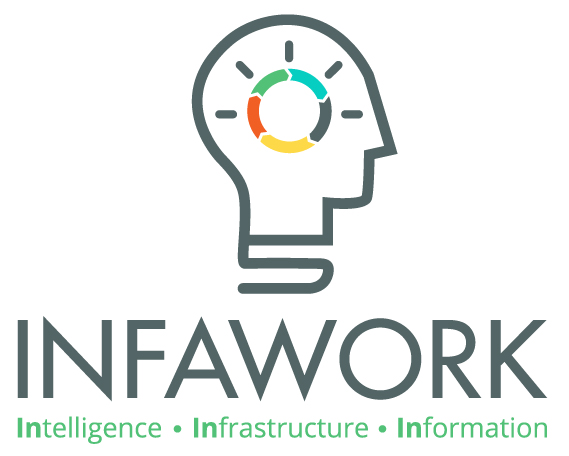This article aims to delve into the intricacies of overcoming HR challenges in the contemporary workspace, focusing on preserving company culture, talent management, and thriving in the era of remote work.


This article aims to delve into the intricacies of overcoming HR challenges in the contemporary workspace, focusing on preserving company culture, talent management, and thriving in the era of remote work.

Discover the 5 essential steps to create an effective employee onboarding process, ensuring a smooth and engaging start for new hires.

In today’s dynamic workforce, businesses engage worker classifications of various types: employee or independent contractor. Accurately classifying workers as employees or independent contractors is crucial to avoid legal and financial repercussions. This blog post aims to clarify the distinctions between the two classifications and raise awareness of the risks associated with misclassification. Employee or Independent Contractor: IRS Guidelines According to the Internal Revenue Service (IRS), determining worker classification involves examining the entire relationship between the worker and the company. Key factors include behavioral control, financial aspects, and the type of relationship. Here’s what to consider: Worker Classification: Key Categories When determining whether a team member is an employee or an independent contractor, consider these three main categories: Dangers of Misclassification Misclassifying workers can lead to severe consequences: Growth of Independent Contracts The gig economy, characterized by short-term, freelance, or contract work, has experienced exponential growth in recent years. Technological advancements and shifting workforce preferences have fueled this expansion, as platforms like Uber, Airbnb, and Upwork offer opportunities for individuals to work flexibly and autonomously. The allure of independence, flexibility, and potential for higher earnings has attracted a diverse pool of workers, including freelancers, part-time workers, and those seeking supplemental income. This trend is not limited to specific industries; instead, it permeates various sectors, from transportation and hospitality to marketing and IT services, reshaping traditional employment models and challenging conventional notions of work. Gig employers beware While the gig economy offers numerous benefits for both workers and businesses, it also presents unique challenges and concerns. For workers, the lack of job security, benefits, and legal protections often associated with traditional employment can lead to financial instability and uncertainty. Additionally, the gig economy’s reliance on technology and algorithms for job allocation raises questions about fair pay, worker rights, and algorithmic biases. On the business side, navigating legal and regulatory complexities, such as worker classification and labor standards, poses challenges for companies operating in this space. Despite these challenges, the gig economy’s continued growth underscores its significance in shaping the future of work and necessitates ongoing dialogue and adaptation to ensure fair and sustainable outcomes for all stakeholders involved. Courts of law continue to face cases on whether gig workers are employees or independent contractors. Uber, Lyft, Grubhub are just a few companies whose business model relies on independent contractors but who have faced lawsuits claiming misclassification. Conclusion Navigating employee and independent contractor classifications is crucial for both employers and workers. Accurate classification ensures legal compliance and contributes to a healthy work environment. Employers should seek professional advice and stay informed about labor laws to avoid the pitfalls of misclassification.

by Anson Scoville If you own a business today then you are no stranger to the evils of software pricing. If you have looked at implementing a companywide ERP then, chances, are, the sticker shock on ERP cost has kept you up at night. No matter the size of the business, the rising cost of software is becoming more and more challenging as businesses rely more and more on software. One recent memory from my tenure at a prominent business exemplifies this struggle. It was approaching year-end and the rush to finalize the current year while simultaneously preparing for the next year was unmistakable. As we approached the close of another fiscal cycle with revenue nearing an impressive two billion dollars, every department was deeply entrenched in refining their budgets. Amidst this flurry of business activity, a particular evening stands out vividly. It was when my IT Director entered my office, a hint of concern disrupting his usual composure. What he conveyed was unsettling: our longstanding software provider, a recognized name in personal and business software, was proposing a daunting 30% software subscription fee increase for the upcoming year. Software Pricing Increases Our ensuing conversation mirrored a broader industry dilemma regarding software pricing and software subscription annual increases: Me: “Have they introduced any significant updates or enhancements this year?” IT: “Not really.” Me: “Have they integrated innovative features to improve our operational efficiency?” IT: “Unfortunately, no.” Me: “Have they consistently provided excellent service and partnered with us to overcome challenges?” IT: “Not quite.” These revelations highlighted a concerning reality: escalating costs without corresponding value addition—a stark reflection of the dynamics within the business software landscape. ERP Costs escalate – prioritizing their profits, not yours This narrative wasn’t unique to my organization. Software providers offer Enterprise Resource Planning (ERP) software, particularly public companies who have a primary duty to their shareholders not their customers, revenue growth is primary. This business model negative impacts the customers who grapple with a landscape marked by rising ERP cost, opaque pricing models, and limited customer-centricity. The consequences extend beyond financial strain, affecting organizational morale and stifling innovation. It’s a sobering reminder of an industry where short-term gains often overshadow long-term partnerships and sustainable growth. A customer first software subscription approach Recognizing these systemic challenges, INFAWORK emerged as a solution. At its core, INFAWORK transcends traditional paradigms, advocating for a customer-centric approach grounded in transparency, collaboration, and genuine partnership. Our mission goes beyond transactional engagements; it embodies a commitment to fostering enduring relationships, driving innovation, and delivering tangible value for our clients. Our transparent pricing model starkly contrasts with industry norms of hidden costs, vague pricing structures, and 3rd party resellers. If you ever see “Call for Pricing” advertised then run the other direction. Translation: “Call so we can understand exactly how many of your hard earned dollars we can extract from you”. When you go to a store, does the price tag ever say “Call for Pricing“? The INFAWORK difference Through affordable pricing structures, continuous improvement, collaborative innovation, and transparent communication, INFAWORK aims to redefine industry standards. We envision a future where all businesses have access to a scalable infrastructure solutions they can tailor to their unique business needs, fostering an platform where efficiency thrives, innovation flourishes, and entrepreneurship prevails. We want to help businesses succeed. We define our success by our customer’s success. The journey ahead In this transformative journey, INFAWORK remains steadfast in reshaping the business software landscape. Through unwavering dedication, collaborative innovation, and a relentless focus on customer success, we strive to set new industry benchmarks, ushering in an era defined by mutual respect, transparency, and shared success. To read the first part of this series, CLICK HERE



A founder’s journey to solve problems with existing solutions and bring years of experience to small and medium size businesses.